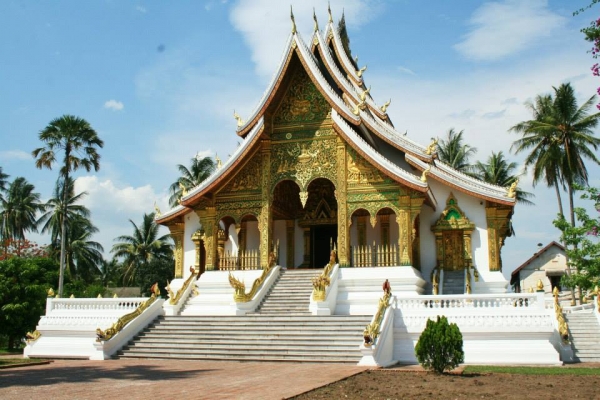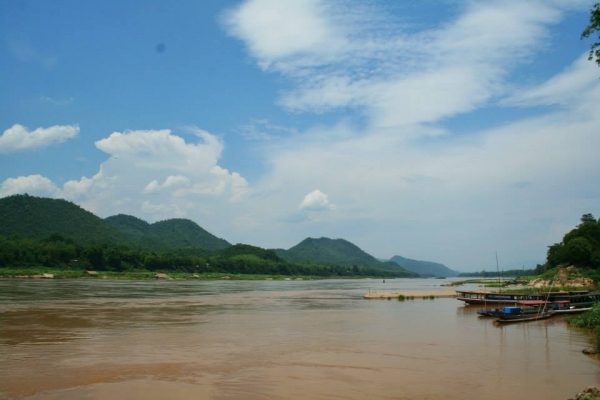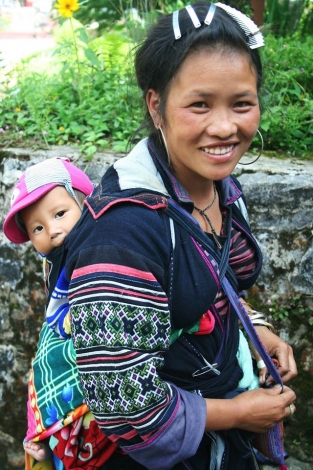Nu pierdeți cele mai bune locuri de muncă!
Abonează-te și săptămânal iți vom trimite un email cu ultimele locuri de muncă disponibile. Introdu adresa ta de email mai jos
The backpacker routes of South-East Asia tend to wind through the three major countries of Thailand, Cambodia, and Vietnam, but right there in the middle is the underrated paradise of Laos. Without a border on the ocean, less traffic makes their way through the mountainous country (no islands? What?), and a significantly lower population than its neighbors (just under 7 million) means there aren’t very many cities or large towns. The laid-back mentality of South-East Asian peoples is amplified in the rural, less developed nation of Laos, and if you’re looking for some real relaxation you’ll find it here.
The colonial architecture and ancient Buddhist temples in most towns in Laos are other huge draws for tourism. Buddhism has been a huge shaping force in the development of the country and any practitioners will find plenty of places to study.
Geography
The majority of the country of Laos is mountainous. Wide, slow rolling rivers wind their way through the valleys, and on these rivers most of the larger towns sit. The mighty Mekong forms the border between Laos and Thailand and meanders its way through the central plains of the country. The tropical monsoon climate irrigates the dense jungles that cover almost every acre of undeveloped land. Trekking, hiking, visiting waterfalls, and seeing tigers in the national parks are popular here. Laos is the perfect country to rent a motorbike and get out into the hills. Hill tribes constitute a significant portion of the population in Laos, and visiting villages is a great way to see a side of life outside of your norm.
The People
55% of Laos is inhabited by the Lao ethnic group, which migrated from China in the first millennium AD. The remainder are among the Hmong, Khmou, and various other hill tribes who have lived in Northern Vietnam, Laos, and Thailand for centuries. “Laotian” refers to the political citizenship of all peoples of Laos, not to any ethnic group in particular. Buddhism is the dominate religion, but many of the smaller ethnic groups have belief systems of their own. Lao is the official language but once again, many languages specific to the different hill tribes exist as well. Rice is the largest commodity and nearly three-quarters of the population are self-sustaining in the food crop.
Teaching English In Laos
Over 73% of the population in Laos is literate, which is relatively high for such a rural country. There are many different ethnic groups coexisting in the country, though, and the literacy, school attendance, and educational attainment rates vary greatly between each one. Quality of and access to education can be very poor for some. Certain groups, such as the AEA, are currently working to improve infrastructure and teacher training in rural areas. If you choose to teach abroad in Laos, you can become a small part of this effort to bring better, unbiased education to the people of the country.
If you just wrapped up your TEFL or TESOL certification course and are searching the world for the perfect spot for you, check out some of these great programs running English courses in Laos.
ARDA: ARDA Language Centers have been running in Laos since 1996. They have three main schools in the cities of Luang Prabang, Pakse, and the capitol, Vientiane. TESOL certification is required, and it is a volunteer opportunity.
21st Century School: This school is located in Vientiane and is a salary-based job. This school has a “swift” English course as well as a “swift” Lao course if you are looking to learn the language during your stay.
Openmind Projects: This Thailand-based NGO offers a program in Northern Laos called Eco Tourism Development. The Water Buffalo Mountains have been closed off to tourism until recently, and the program is seeking volunteers to teach English to villagers and guides who will host guests looking to trek in the area. The program is dedicated to eco tourism and preserving the untouched jungle. No TEFL certification or teaching degree is required; they provide training for you. There are a few other opportunities in Laos (as well as Thailand, Cambodia, and Nepal) on their website, so make sure to check it out.
There are a bunch of other programs to look into online, but above are just a few places to get you started. Full-time, salary-based jobs are hard to come by over the internet, but once in Laos it will be easier to lock down this kind of job, if it is what you’re looking for.
The Hard Facts
Sadly, Laos ranks pretty poorly on the Human Development Index and Global Hunger Index. Less than 35% of the population live in urban areas, and access to food and potable water is growing very slowly in the country. Almost half of the population belongs to minor ethnic groups, which have been subject to acts of genocide over the years. Environmental problems such as deforestation and the building of dams threaten Laos and the surrounding countries, but hydroelectricity and the mining of metals are the two biggest money makers for the country. Like all countries, Laos has its ups and downs, but if you choose to make your home here you may have the opportunity to learn more and get involved. Teaching English is a great way to connect with the local people and get to know the country better than any tourist can.
A Note on Vaccines and Medications
The relatively rural country of Laos is at high risk for infectious diseases. The monsoon climate, dense jungles, and large rivers all contribute to the high number of mosquitoes. If you were thinking of skipping your malaria meds while traveling in South East Asia, think again before visiting Laos. Typhoid, malaria, dengue fever, and hepatitis A are all prevalent here, so make sure to get your shots before you leave.
Visas
Tourist visas valid for 30 days are available upon arrival to Laos, whether that is at the airport or from a border crossing, and cost only US $30. For longer stays, you can apply for an extension after arriving in the country, but securing a 60-day visa online is the wisest way to go. It costs about US $109 to apply online and can be done at the visa HQ website.
Sign in to publish a comment



Be the first to comment on this post.